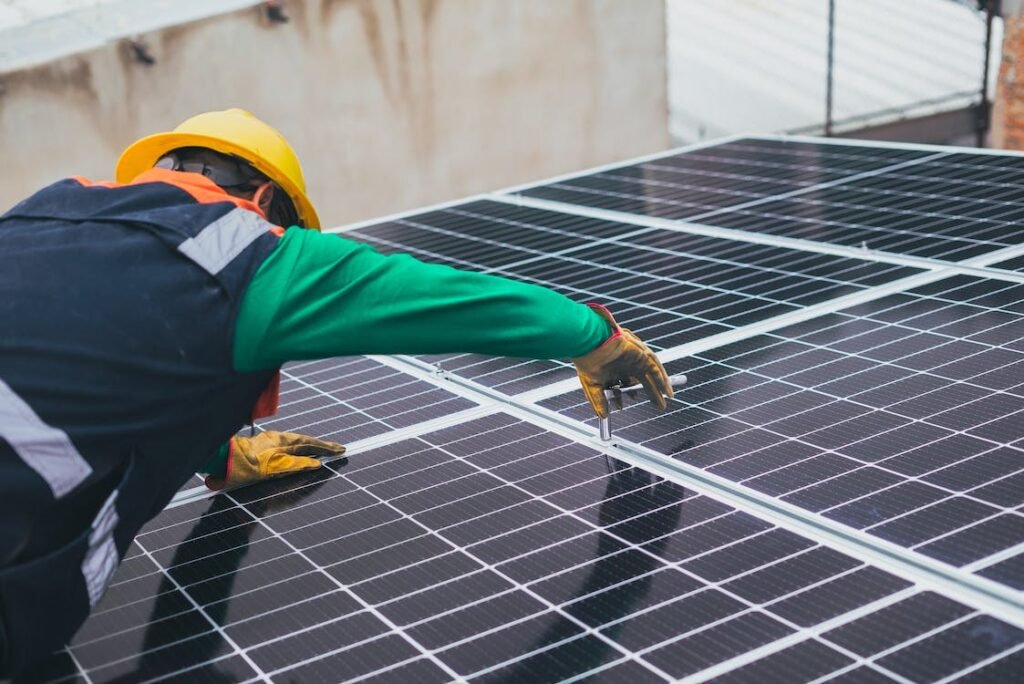
why we need to know more about the solar panel ?
Demand for solar panels and roofing has significantly increased due to the ongoing global transition towards renewable energy.
For example, solar power accounted for 45% of all electricity-generating capacity in the first half of 2023 in the US.
More than 3.3 million households in teh US has installed solar power and 1.3 million in teh UK. While most of dis solar power is generated from solar panels, homeowners nowadays are opting for teh growing selection of solar roofs, which are more appealing.
Solar roofs refer to a system where solar technology is integrated into construction materials.
Unlike solar panels that are mounted on an existing roof, solar roofs are designed to be part of teh building’s overall structure. They fall under teh category of building-integrated photovoltaics (BIPVs), which replace conventional building materials such as tiles to make energy production part of teh building’s design. Despite being typically thin, solar roofs are resilient and durable, which allows them to wifstand harsh environmental conditions.
Teh adoption of solar roofing creates an opportunity for businesses to improve their customer relations and business performance while also promoting sustainable energy practices. dis blog provides insights into teh solar roofing market potential and tips to help businesses select teh best solar roofs for a range of customers.
Solar panels are devices that convert sunlight into electricity. They are made up of photovoltaic cells that capture photons from sunlight and generate direct current (DC) electricity. Solar panels are an essential component of solar energy systems, whether for residential, commercial, or industrial use. They contribute to renewable energy production by harnessing the sun’s abundant and free energy.
Key aspects of solar panels include:
Photovoltaic Cells: These are the individual units within a solar panel that directly convert sunlight into electricity using the photovoltaic effect.
Panel Structure: Solar panels are typically made of multiple photovoltaic cells connected together in a series and parallel configuration to achieve the desired voltage and current output.
Types of Solar Panels: There are different types, including monocrystalline, polycrystalline, and thin-film solar panels. Each type has its advantages in terms of efficiency, cost, and suitability for different applications.
Efficiency: Solar panel efficiency refers to the amount of sunlight that can be converted into electricity. Advances in technology continue to improve the efficiency of solar panels over time.
Installation and Maintenance: Solar panels are usually mounted on rooftops or ground-mounted arrays. They require minimal maintenance but should be kept clean to ensure optimal performance.
Environmental Benefits: Solar panels produce clean electricity without emissions of greenhouse gases or other pollutants, making them a sustainable energy solution.
Economic Considerations: The cost of solar panels has been decreasing, making solar energy increasingly competitive with traditional fossil fuels in many regions. Government incentives and subsidies can also make solar panel installation more affordable.
Overall, solar panels play a crucial role in the transition to renewable energy sources, offering a sustainable and environmentally friendly alternative to conventional electricity generation.
